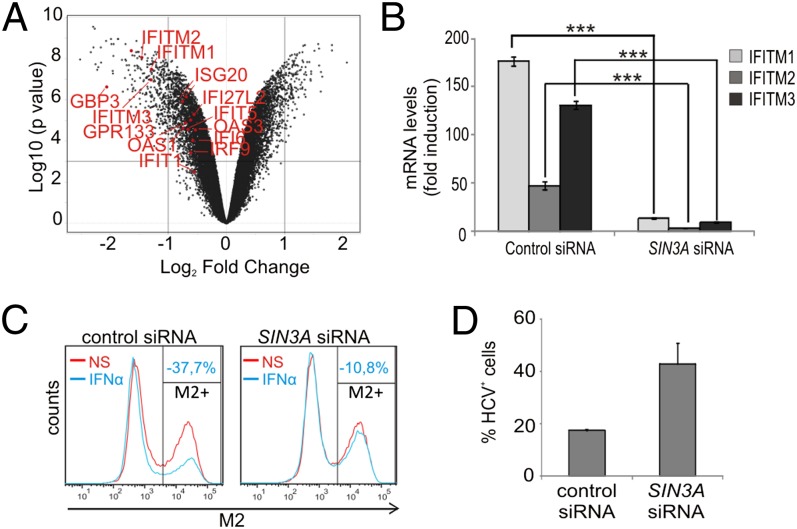Fig. 5.
The Sin3a complex is required for IFN-stimulated ISGs transcription and efficient antiviral response against influenza A and hepatitis C viruses. (A) Volcano plot representing the differential gene expression profiles (expressed as log2 fold-change) of SIN3A-silenced versus control-silenced MCF7 cells. Down-regulated ISGF3-responsive genes are highlighted. (B) Hek293T cells were transfected with a control siRNA (Renilla luciferase) or SIN3A siRNA. After 72 h, cells were stimulated with IFN-α2 for 24 h and the mRNA levels of the IFITMs were evaluated. Error bars indicate SD from triplicates. ***P < 0.001; one-way ANOVA with Bonferroni test. (C) Hek293T cells were transfected with a control siRNA (Renilla luciferase) or SIN3A siRNA. After 72 h, cells were left nonstimulated or stimulated with IFN-α2 for 24 h before 14-h exposure to influenza A/PR8/34 virus. Infection efficiency was assessed by immunostaining of the viral protein M2 followed by flow cytometric analysis. (D) Huh7.5 cells were transfected with a control siRNA (Renilla luciferase) or SIN3A siRNA. After 72 h, cells were stimulated with IFN-α2 (1 ng/mL) for 24 h before 48-h exposure to HCV. The efficiency of the infection was evaluated by immunostaining of the viral protein NS5A. Results are representative of at least two independent experiments.

